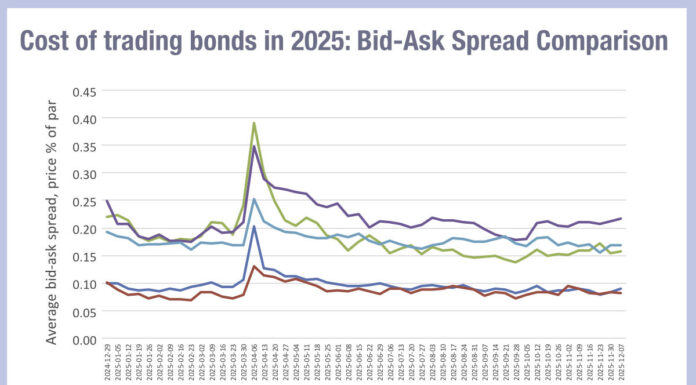 Making the working lives of credit traders better is The DESK’s mission. Traders are time poor, and systematising trading allows them to free up time by reducing time spent assessing information and decision making in situations where the choice is clear.
Making the working lives of credit traders better is The DESK’s mission. Traders are time poor, and systematising trading allows them to free up time by reducing time spent assessing information and decision making in situations where the choice is clear.
Such choices are not always clear.
Six years ago, The DESK worked with the UK’s Investment Association to look at ‘best execution’ in fixed income trading. A key aspect of the report we published on the topic was the emphasis traders put upon the different execution objectives which affected the way they executed a trade.
To systematise trading, these objectives, the current market conditions and the type of fund being traded for all need to be factored into a decision tree, as does the level of counterparty responsiveness to engagement.
At a basic level, a trading decision tree ought to support the triage of high touch and low touch trades, reducing the time spent by a trader working an ‘easy’ trade.
Getting the right information into that tree is not straightforward. It can require dynamic and static information from each of those inputs in order to highlight whether a path might be more or less suitable for a trade. That data will need to capture third party price and liquidity information, internal data, and historical data including market context.
The question then is how the decision tree is systematised. At a basic level, it can be a guide for a trader in breaking out lower touch trades to push onto platforms, and working everything else.
It can also become a guided smart order router, highlighting which paths not to pick when trading an order due to their lack of suitability, and then allowing the trader to assess which of the appropriate choices potentially works best.
Keeping the ultimate decision in the hands of the trader is a common preference for asset managers, who see a ‘no touch’ option as going too far. However, as data improves, and given the right checks and balances for market activity,
Ultimately, a decision tree can evolve into a true smart order router, evaluating the liquidity across all venues it is connected to, evaluate the cost of trading, make assessments of the likelihood of execution, and then managing that order on behalf of a trader.
But trees can be challenging to grow; market structure changes frequently and any decision tree needs to be treated as a living, evolving thing with the right inputs and pruning to keep it in shape.
It may be tempting for credit traders to keep the processes they use within their heads as implicit skill sets, however ultimately mapping out a trader’s process is a positive way to build a replicable model for trading, with a lower risk of bias.
A ‘Siri’ for traders can be expected before we get a HAL 9000, thankfully.
©Markets Media Europe 2024
©Markets Media Europe 2025















